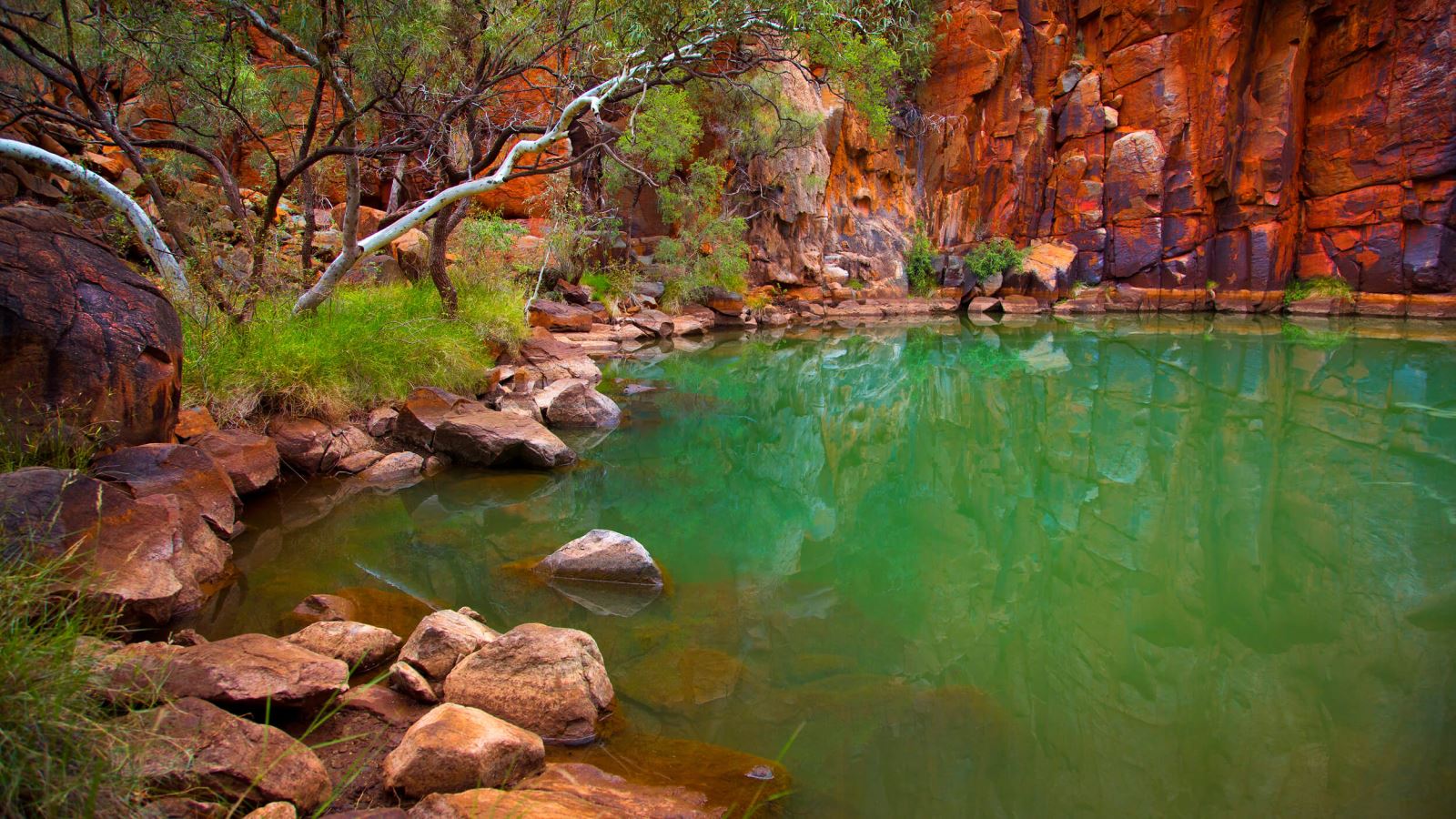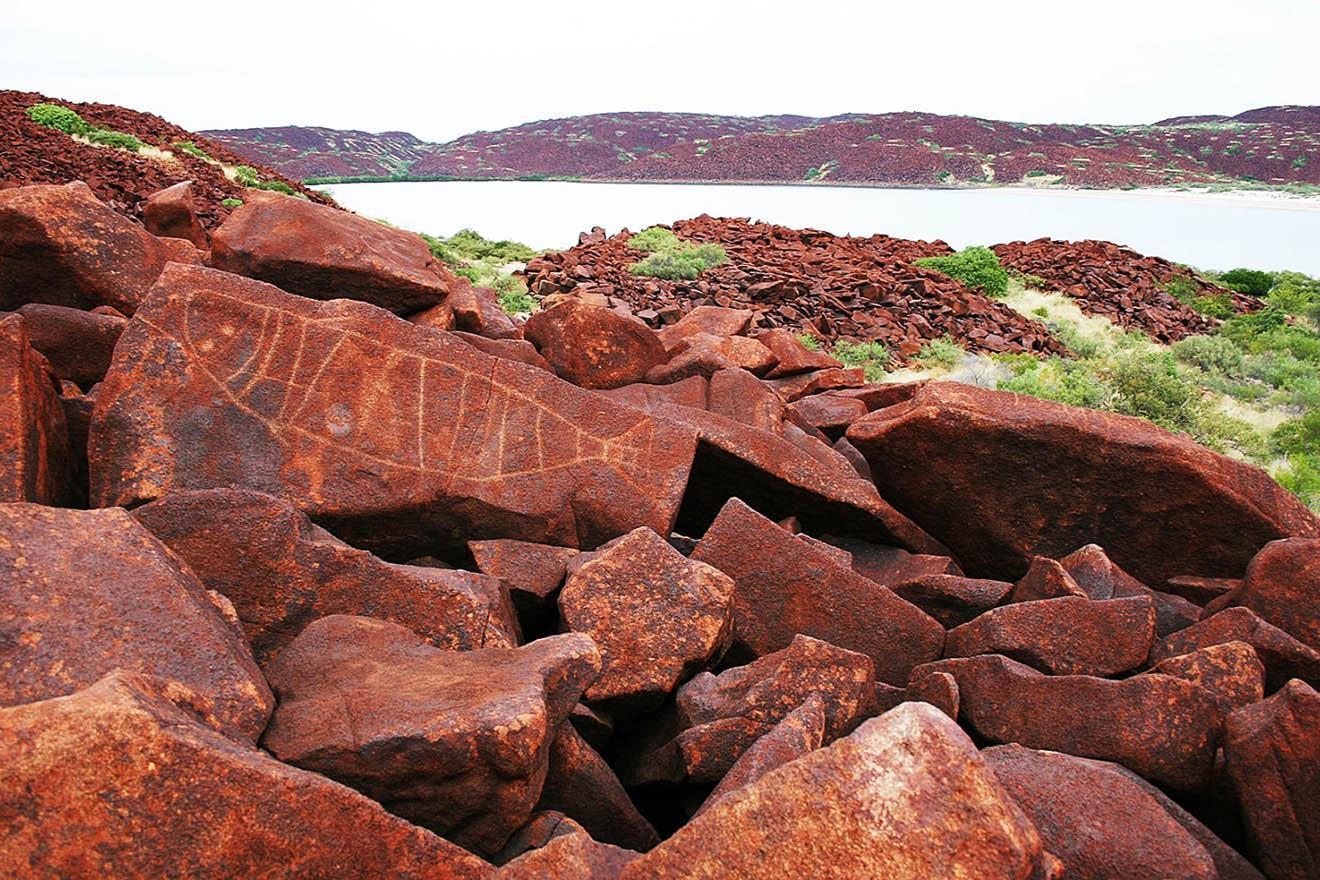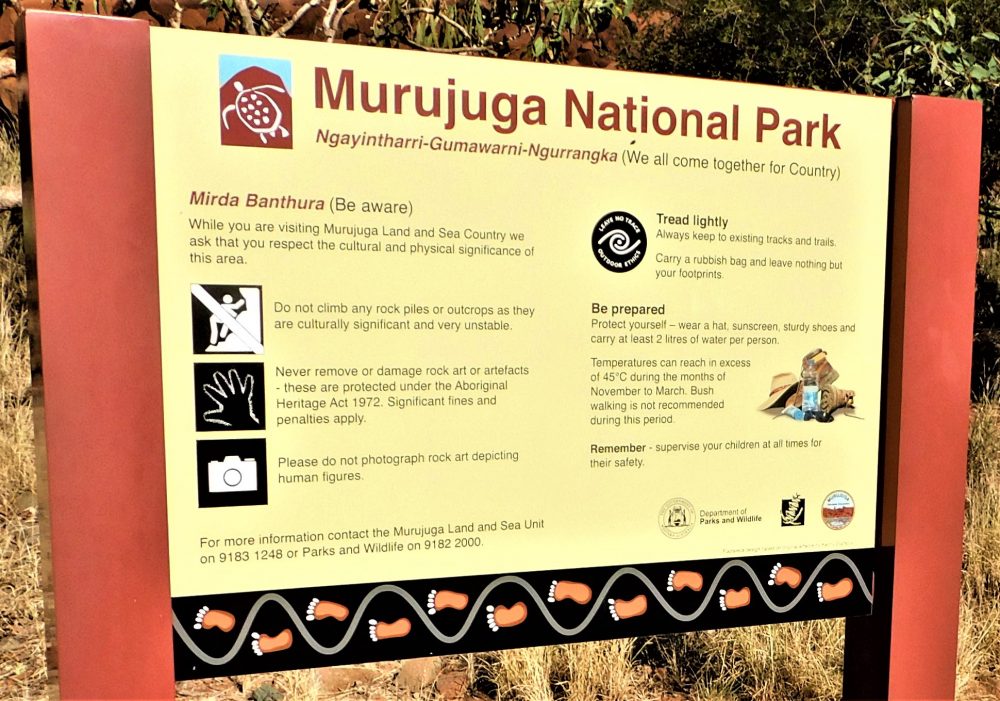Murujuga National Park has the distinction of being Western Australia’s 100th national park and the first to be jointly managed in Western Australia. It is owned by the Murujuga Aboriginal Corporation (MAC) which represents the five Traditional Custodian groups of the area Ngarluma, Yindjibarndi, Yaburara, Mardudhunera and Woon-goo-tt-oo, collectively known as Ngarda-Ngarli. The national park is leased back to the WA State Government and jointly managed by MAC and the Department of Biodiversity, Conservation and Attractions.

The national park is part of larger area known as Murujuga which means “Hip Bone Sticking Out” in the Ngarluma-Yaburara language, and refers to the 42 islands of the Dampier Archipelago, the Burrup Peninsula and Murujuga National Park. The Ngarda-Ngarli have been part of Murujuga for tens of thousands of years and have a deep and spiritual connection to it.

With more than one million images, Murujuga is home to one of the largest, densest and most diverse collections of rock art, or petroglyphs, in the world. These capture at least 47,000 years of human existence and provide an archaeological record of traditional use of the area over this time.
The engravings show human images, extinct animal species such as megafauna and Thylacines (Tasmanian tiger), as well as existing avian, marine and land animals.

The area also features middens, fish traps, rock shelters, ceremonial places and stone arrangements. The rock art has deep meaning for Ngarda-Ngarli, providing a tangible link to stories, customs and knowledge of their land and resources and connecting them to the events and people of the past and their beliefs today. A 700m boardwalk with information is universally accessible at Ngajarli (formerly known as Deep Gorge).

According to parks.dpaw.wa.gov.au





![[TOP – BEST PRODUCTS 2023] TOP 100 outstanding OCOP- certified products in Vietnam (P.02) Antesco Henicorhynchus poached with sugarcane (An Giang Province)](https://aseanrecords.world/wp-content/uploads/2023/05/Ca-Linh-kho-mia-218x150.jpg)
![[TOP – BEST PRODUCTS 2023] TOP 100 outstanding OCOP- certified products in Vietnam (P.01) Mr.Ba Loc “Chao” fermented Java barb (An Giang Province)](https://aseanrecords.world/wp-content/uploads/2023/05/ipiccy_image-7-1024x640-1-218x150.jpg)






